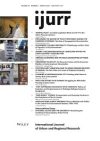This study of cross‐border population mobility in the Hong Kong–Guangdong region adopts a humanistic and disaggregate approach to analyzing how ordinary and sometimes underrepresented people, such as housewives, workers, low‐income households and elderly retirees, have engaged in border‐crossing as a personal strategy to actively negotiate with the reproduction of regional asymmetry in the era of uneven globalization. Flexible sojourning across the border has long been pursued by the local population in this region as a means of survival during natural catastrophes, economic downturns, wars and political turmoil. Cross‐border population mobility has acquired a new momentum in recent years subsequent to the uneven economic and social changes on the two sides of the border. The border‐crossers are, seemingly, a uniform group of people whose travel behavior does not deviate from the expectation of conventional wisdom. However, a closer analysis reveals significant differences among the border‐crossers. Four main types of border‐crossers are identified: shoppers, workers, homebuyers and elderly retirees. Each type demonstrates distinct patterns of border‐crossing and makes the trip out of different considerations. Border‐crossing has different meanings to people of different social identities. Cross‐border mobility can be and has been used by different kinds of people in different ways as a personal strategy to take on the challenges of structural changes at home and across the border. The article calls for an extension of border studies beyond the existing emphasis on border functioning, nation‐states and regional development toward examining more seriously and carefully the ordinary people who are involved in border‐crossing as a practice of their everyday life.
Details
Written by:
GEORGE C.S. LIN, PAULINE H.M. TSE
Digital Object Identifier (DOI)
10.1111/j.1468-2427.2005.00626.x
About DOI
Read full article as PDF
Read full article as HTML
See the references for this article
